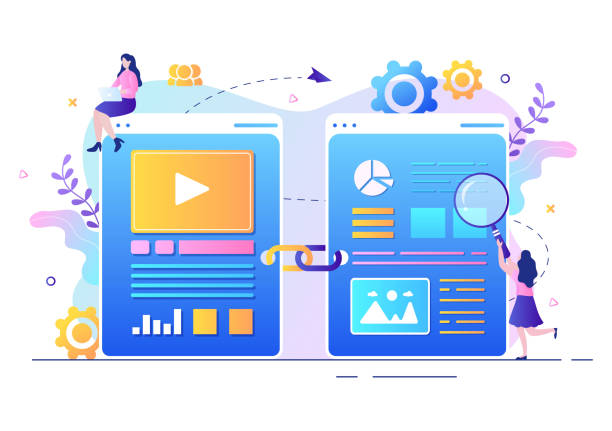Introduction to the Importance of Multilingual Website Design in Today’s World
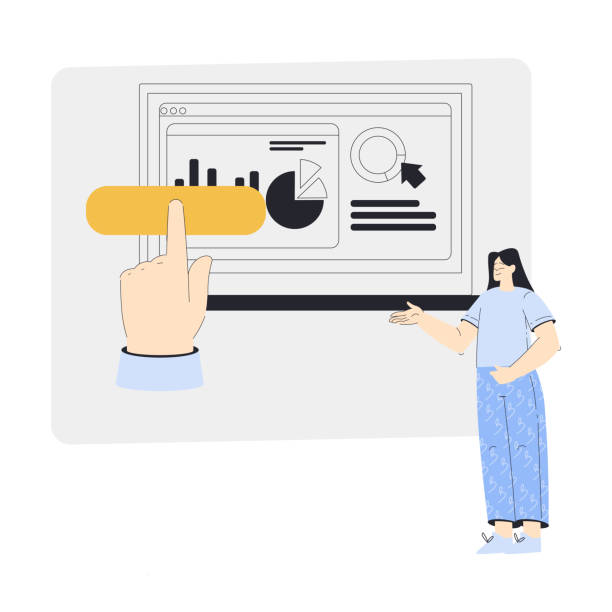
In the present era, where geographical boundaries have become less meaningful in the virtual space, a #strong_digital_presence is vital for any business.
One of the most important strategies to achieve this goal is multilingual website design.
This approach is not just a luxury feature; it is considered a business necessity that allows companies to connect with a wider audience worldwide.
Penetrating new markets and increasing access to international customers is almost impossible without providing content in their native language.
This not only helps increase website traffic but also strengthens brand credibility and builds trust among users from different cultures and languages.
A single-language website misses countless opportunities for businesses.
For example, if a company only provides content in Persian, potential English-speaking, Arabic-speaking, Chinese-speaking, or Spanish-speaking customers may never become familiar with its products or services.
Multilingual website design enables businesses to overcome language barriers, deliver their message to millions worldwide, and thus significantly increase their market share.
This approach is a strategic investment for the future of any business with a global vision.
Furthermore, research has shown that users are more likely to purchase from websites that offer content in their native language.
This is especially true for online purchasing decisions that require a precise understanding of product or service details.
By implementing a multilingual website, you not only address users’ language needs but also provide a much better and more personalized user experience (UX) that can lead to increased conversion rates and customer loyalty.
This step is the first and most crucial step towards #globalizing_your_business on the web.
Does your current corporate website not reflect your brand’s credibility and power as it should? Rasaweb solves this challenge for you with professional corporate website design.
✅ Increase visitor credibility and trust
✅ Attract more targeted customers
⚡ Click for free consultation!
Multifaceted Advantages of Multilingual Websites and Their Impact on SEO
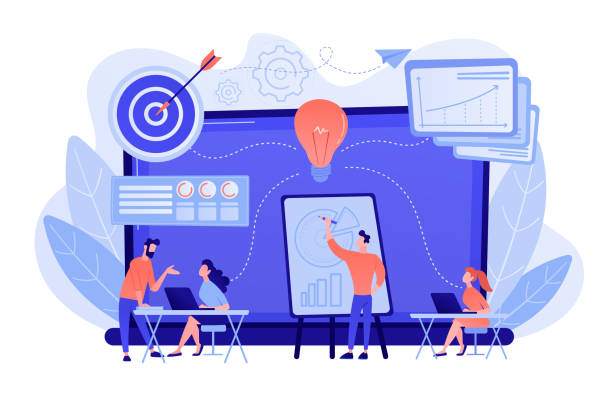
The benefits of #multilingual_website_design extend beyond simply providing content in different languages; this approach has a profound impact on #SEO_improvement and global reach.
One of its most important advantages is the increased #audience_reach.
By offering content in multiple languages, you can enter new markets that were previously inaccessible to you.
This means increased organic traffic through search engines in different countries.
Search engines like Google, Bing, and Yandex prefer multilingual websites for displaying local and international search results, provided they are correctly configured.
From an #SEO perspective, correct implementation of hreflang and appropriate URL structure for each language are of paramount importance.
These tags help search engines deliver the correct version of a page to the appropriate user (based on language and geographical region) and prevent duplicate content issues.
A multilingual website design that adheres to international SEO principles can significantly improve your website’s ranking in global search results. This means more reach, more credibility, and ultimately, more business opportunities.
Furthermore, users often trust websites that offer content in their native language, which in itself helps increase conversion rates and reduce bounce rates.
Improved #user_experience (UX) is also another key advantage.
When users can read the content they want in the language they are most comfortable with, their interaction with your website increases.
This positive interaction leads to increased time on site and reduced bounce rates, both of which are positive signals for search engines.
Ultimately, multilingual website design is a strategic investment for #international_growth and ensuring the sustainability of your business in the competitive global market.
It is not just a tool for access, but a bridge for deeper connection with global audiences.
Technical Considerations in Multilingual Website Design and URL Structure
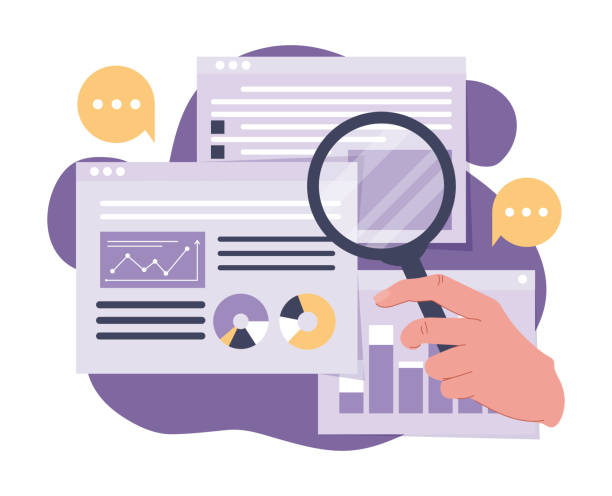
When embarking on #multilingual_website_design, there are numerous technical considerations that are crucial for the project’s success.
One of the most important of these considerations is choosing the appropriate #URL_structure for each language.
This choice not only affects SEO but also determines how your website is perceived by search engines and users.
There are three main methods for this: using subdomains, subdirectories, or country code top-level domains (ccTLDs).
Using #subdirectories (e.g., yoursite.com/en/ or yoursite.com/fa/) is often preferred due to ease of implementation and management, as well as the transfer of authority from the main domain.
Subdomains (e.g., en.yoursite.com or fa.yoursite.com) are another option that are technically treated as separate sites but can practically be part of a larger project.
Finally, using ccTLDs (e.g., yoursite.co.uk or yoursite.ir) is the best option for precise #geographical_targeting, but their management and maintenance can be more complex and costly.
In addition to URL structure, the correct use of the #hreflang tag in the header of each page is essential.
This tag tells search engines which language and regional versions of a page are available and which version should be displayed to specific users.
Improper use of hreflang can lead to duplicate content issues and reduced search rankings.
Also, choosing the right #content_management_system (CMS) that fully supports multilingual capabilities (such as WordPress with WPML or Polylang plugins, or Drupal) is very important for efficient #multilingual_website_design.
Below, you will see a comparative table of different URL structures:
| Structure Type | Example | Advantages | Disadvantages |
|---|---|---|---|
| Subdirectory | example.com/en/page/ | Ease of implementation, main domain authority transfer, easy management | May be less effective for precise regional targeting |
| Subdomain | en.example.com/page/ | Clear geographical targeting, content separation | May be treated as a separate site for SEO, requires separate SSL management |
| ccTLD (Country Code Domain) | example.de/page/ | Strongest signal for geographical targeting, local user trust | Management complexity, high cost, need to purchase and maintain multiple domains |
Choosing #UTF-8 character encoding is also mandatory to support all languages and scripts.
These elements form the foundation of a successful #multilingual_website_design, and neglecting any of them can lead to serious problems in website accessibility and ranking.
Content Translation and Localization Strategies for Global Audience Attraction

Translating content for a #multilingual_website_design goes beyond merely converting words from one language to another; this process also includes #localization.
Localization means adapting content to the culture, values, customs, and even humor of local audiences.
For example, an image, color, or even a joke that is perfectly normal in one culture might be offensive or incomprehensible in another.
Ignoring these subtle cultural nuances can damage your brand’s credibility and even lead to the loss of potential customers.
Therefore, the importance of #specialized_translation and professional localization in the success of a multilingual website is undeniable.
The choice between #human_translation and #machine_translation is also a significant decision in this process.
While machine translation tools like Google Translate have made significant advancements, they are still unable to fully grasp cultural subtleties, local idioms, or the appropriate tone for specific audiences.
For important content, marketing, or legal texts, using #native_translators and localization specialists who not only have full command of the target language but are also familiar with its culture is recommended.
This is especially critical for #culturally_sensitive or controversial content.
Another important aspect is maintaining #consistency_of_terminology and brand tone across all languages.
Creating a specialized glossary and style guide for translators ensures that your brand’s message is conveyed uniformly and effectively in every language.
These documents help translators correctly use technical and marketing terms and prevent inconsistencies.
Ultimately, the success of a #multilingual_website_design depends on the quality of translations and its ability to communicate effectively with local audiences.
This is an #investment in your global credibility and reach.
Does your current e-commerce website design not generate the expected sales for you?
Rasaweb is a specialist in professional e-commerce website design!
✅ An attractive and user-friendly site aimed at increasing sales
✅ High speed and security for an ideal shopping experience⚡ Get a free consultation for online store design with Rasaweb!
SEO Optimization for Multilingual Websites: A Comprehensive Guide

#SEO_optimization for a #multilingual_website_design requires a different and more precise approach compared to single-language SEO.
This process is not limited to keyword translation but includes understanding how users search in different regions and languages.
One of the most important tools in this regard is the correct use of the #hreflang tag.
These tags are placed in the <head> section of HTML pages and inform search engines which language and regional versions of a page are available.
For example, if a page exists in both Persian and English, hreflang helps Google show the English version to English-speaking users and the Persian version to Persian-speaking users.
This helps prevent #duplicate_content and improves rankings.
#Keyword_research should also be conducted separately for each language and region.
Words that are popular in one language or culture may not be used or may have a different meaning in another.
Local keyword research tools and consultation with localization specialists can be very useful in this area.
Also, the URL structure and #geographical_signals (such as hosting servers in the target country or registration in local webmaster tools) help search engines present your content to local audiences.
For example, a website with a .de domain will be more SEO-optimized for German-speaking users in Germany than a generic domain (.com).
Finally, #link_building should also be done with an international approach.
Striving to acquire backlinks from reputable websites in different languages and regions shows search engines that your website has global authority.
This process requires time and effort, but its reward, in the form of increased global rankings and targeted traffic, is very valuable.
By strictly adhering to these international SEO principles, your #multilingual_website_design can become a powerful tool for #global_marketing and create a significant competitive advantage for your business.
Challenges and Solutions for Managing a Multilingual Website
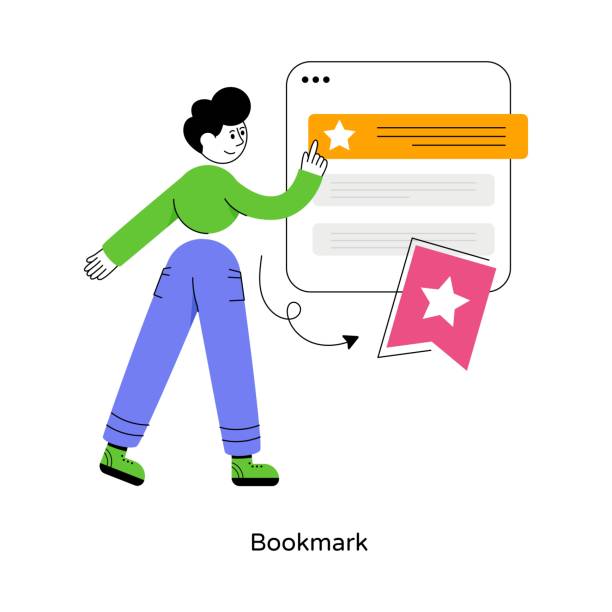
Managing a #multilingual_website_design, alongside its many advantages, also comes with specific challenges that must be correctly identified and managed.
One of the main challenges is #maintaining_consistency and updating content across all languages.
When new content is added or existing content changes, ensuring that all language versions are updated accurately and on time can be complex.
This is particularly important for time-sensitive information such as prices, promotions, or news announcements.
Lack of coordination can lead to a poor user experience and customer confusion.
Another challenge is #managing_the_translation_and_localization_team.
Collaborating with multiple translators, editors, and localization specialists worldwide requires a robust project management system.
Using Translation Management Systems (TMS) can facilitate this process; however, close monitoring of quality and timing is still necessary.
The costs associated with translation and maintenance can also be significant.
Professional translation, localization, and maintaining multilingual technical infrastructures all require financial investment that must be considered in the initial budgeting.
#Technical_issues and #support are also among the challenges.
Ensuring that the website functions correctly across different browsers and devices, and with varying language and region settings, requires continuous testing.
Problems related to font loading, right-to-left/left-to-right (RTL/LTR) text, and support for specific characters of each language must be resolved.
Finally, #maintaining_international_SEO and ensuring that new changes do not negatively impact the site’s ranking in different languages requires continuous monitoring and optimization.
With careful planning, the use of appropriate tools, and collaboration with a specialized team, these challenges can be turned into opportunities for growth, allowing businesses to fully benefit from a #multilingual_website_design.
Choosing the Best Content Management System (CMS) for Multilingual Website Design

Choosing the right #Content_Management_System (CMS) is one of the most critical decisions in the #multilingual_website_design process.
An ideal CMS should allow for easy content management in different languages, support international SEO, and provide the necessary flexibility for customization.
Various options are available in the market, each with its own advantages and disadvantages, and selecting the best one depends on your project’s specific needs and budget.
#WordPress, with its high market share, is one of the most popular options.
Although WordPress does not natively support multilingual capabilities, plugins like #WPML (WordPress Multilingual Plugin) and #Polylang offer very powerful solutions to transform it into a multilingual CMS.
WPML provides comprehensive translation tools, multilingual content management, and compatibility with many themes and plugins.
#Drupal also natively supports strong multilingual features and is a suitable option for large and complex projects with high customization needs.
For larger and enterprise projects, #Sitecore, #AEM (Adobe Experience Manager), or #Kentico might be suitable options.
These enterprise CMSs offer more comprehensive tools for customer experience management, marketing automation, and advanced multilingual capabilities, but their implementation cost and complexity are significantly higher.
Ultimately, for very small websites or those with specific needs, custom development might also be considered, although this method is usually the most expensive option.
When choosing a CMS, it’s important to consider factors such as ease of use, community or developer company support, maintenance costs, international SEO capabilities, and the ability to integrate with other tools (such as CRM or analytics tools).
An informed choice at this stage can smooth your #multilingual_website_design journey and ensure the long-term success of the project.
Below, you will find a comparative table of popular CMS options for multilingual website design:
| CMS | Multilingual Support | Advantages | Disadvantages |
|---|---|---|---|
| WordPress (with WPML/Polylang plugin) | Plugin-based | Ease of use, large community, numerous plugins, reasonable cost | Requires plugins, in some cases complexity for very large projects |
| Drupal | Native and powerful | Strong native multilingual support, high flexibility, suitable for large projects | Steep learning curve, higher development cost |
| Joomla | Native | Native multilingual support, balanced between WordPress and Drupal | Smaller community than WordPress, less support for some plugins |
| Enterprise CMSs (e.g., Sitecore) | Advanced and comprehensive | Full DXM capabilities, high scalability, advanced marketing tools | Very high cost, complexity of implementation and maintenance, requires specialized team |
The Importance of User Experience (UX) and User Interface (UI) in Multilingual Websites
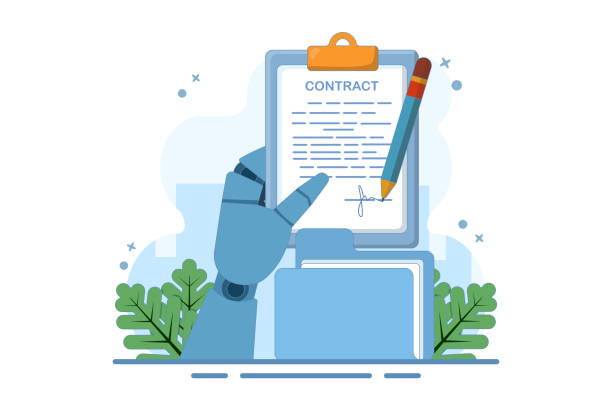
#User_Experience (UX) and #User_Interface (UI) play a vital role in the success of a #multilingual_website_design.
Even the best translations and SEO optimization will be futile if users cannot easily interact with the website.
One of the first and most important aspects is an accessible and visual #language_switcher.
This switcher should be easily located in a prominent place (usually in the header or footer) and include the full names of languages or standard ISO codes (e.g., EN for English, FA for Farsi), not merely country flags, as one language may be used in multiple countries, and one country may have multiple official languages.
#Responsive_Design is essential to ensure correct content display on different devices and in various languages.
Also, special attention must be paid to #text_direction (RTL/LTR).
Languages like Farsi and Arabic are written from right-to-left (RTL), while many other languages are left-to-right (LTR).
This change in direction affects the layout of elements, images, and even tables and must be carefully considered in UI design.
Failure to observe this point can lead to visual clutter and a very poor user experience.
Furthermore, #visual_content and #multimedia_content must also be localized for each language and culture.
An image or video that carries a positive meaning in one culture might cause misunderstanding in another.
Using diverse images appropriate to different cultures gives users a sense of closeness and greater connection with the website.
Finally, User_Testing with native speakers is of paramount importance to ensure that the website provides a smooth and pleasant user experience in all languages and regions.
This attention to detail will significantly help increase user trust and the success of your #multilingual_website_design.
Are you missing out on business opportunities because of an outdated website? With Rasaweb, permanently solve the problem of not attracting potential customers through your website!
✅ Attract more high-quality leads
✅ Increase brand credibility in the eyes of customers
⚡ Get a free consultation for corporate website design
The Future of Multilingual Website Design and Emerging Trends

The world of #web_design and #multilingual_website_design is rapidly evolving, and emerging trends are shaping the future of this field.
One of the most prominent of these trends is the advancement of #Artificial_Intelligence (AI) and #Machine_Learning in translation.
Although machine translation still cannot fully replace human translation, AI-powered tools such as Neural Machine Translation are significantly improving in quality and accuracy.
These tools can accelerate the initial translation process and reduce costs, especially for large volumes of rapidly changing content.
It is predicted that in the future, the integration of AI with translation processes will increase, enabling automatic and real-time updates of multilingual content.
Another trend is the increasing importance of #voice_search and #image_search.
With the widespread adoption of voice assistants like Siri, Google Assistant, and Alexa, and also image search capabilities, websites must optimize their content to respond to these new search methods.
This means that keywords for voice search (which are usually conversational and longer) must be considered, and visual content must also be optimized for detectability and understanding by image search engines.
These trends require an #analytical and #adaptive approach to #multilingual_website_design.
Furthermore, #content_personalization based on language, geographical region, and even user behavior will become more important.
Websites in the future will be able to offer highly customized content to each user, even before they select a language.
This can be achieved using location data, browser language settings, and browsing history.
Finally, the focus on #inclusive_user_experience and accessibility for people with various disabilities is also increasing, which must be considered in #multilingual_website_design so that the website is usable for all users, in any language.
Economic Benefits and Return on Investment of Multilingual Website Design

Investing in #multilingual_website_design is not only a strategic decision for expanding online presence but also offers significant #economic_benefits and #Return_On_Investment (ROI).
Firstly, access to new markets and an increased number of potential customers directly lead to increased #revenue.
By removing language barriers, businesses can reach millions of internet users worldwide who were previously inaccessible to them.
This market expansion can mean exponential growth in sales and services.
From a #cost_optimization perspective, #multilingual_website_design can be more cost-effective compared to other international marketing methods.
For example, digital marketing costs in different countries (such as PPC advertising) might be lower compared to creating a centralized, multilingual platform, but the long-term ROI through organic SEO and direct traffic is often more profitable.
Furthermore, a multilingual website can lead to #reduced_customer_support_costs, as users can find the information they need in their native language, reducing the need for phone calls or emails to clarify ambiguities.
This increases operational efficiency.
Increased #brand_credibility and #customer_trust are also among the most important indirect ROI factors.
Websites that provide content in users’ native language convey a sense of professionalism and customer care.
This trust leads to increased conversion rates, customer loyalty, and even word-of-mouth referrals, all of which contribute to sustainable business growth.
Ultimately, an efficient and optimized #multilingual_website_design is a #strategic_investment for achieving #sustainable_growth and #competitiveness in the global market.
Frequently Asked Questions
| Number | Question | Answer |
|---|---|---|
| 1 | What is multilingual website design? | Multilingual website design means creating a website whose content is available to users in several different languages. This is usually done through a simple user interface for language switching. |
| 2 | Why should we design a multilingual website? | Multilingual website design helps you reach more audiences worldwide, provide a better user experience for international users, and improve your global SEO. |
| 3 | What are the main methods for implementing multilingualism on a website? | The main methods include using subdomains, subdirectories, or URL parameters for each language, as well as using completely separate domains for each language. |
| 4 | Is it better for SEO to use a subdirectory or a subdomain? | From an SEO perspective, both subdirectories and subdomains can be effective. However, many SEO specialists prefer subdirectories due to better transfer of main domain authority. |
| 5 | What are the important tips for translating multilingual website content? | Translation should be done by native translators, content should be localized in addition to translation to match the target audience’s culture, and pure machine translation should be avoided. |
| 6 | What is the role of the hreflang tag in multilingual website SEO? | The hreflang tag helps search engines like Google display the correct language and regional version of a page to appropriate users, which also prevents duplicate content issues. |
| 7 | Can a website be made multilingual without coding? | Yes, in Content Management Systems (CMS) like WordPress, powerful plugins like WPML or Polylang exist that allow you to make your website multilingual without needing to code. |
| 8 | What are the challenges of multilingual website design? | Challenges include translation management, content localization, adherence to SEO principles for each language, technical support for different languages, and ensuring design consistency across different languages. |
| 9 | What is the difference between translation and localization? | Translation is merely converting words from one language to another, while localization involves adapting content to the culture, customs, currency, date and time formats, and even appropriate colors for the target audience. |
| 10 | What is the best user experience (UX) for language switching? | A clear and accessible language switcher (usually in the header or footer), using language names instead of flags (due to regional diversity), and maintaining the user’s position after changing language are important UX considerations. |
And other services of Rasaweb Advertising Agency in the field of advertising
Smart Customer Journey Map: A quick and efficient solution to increase website traffic with a focus on optimizing key pages.
Smart UI/UX: A professional solution for user interaction with a focus on optimizing key pages.
Smart Google Ads: Professional optimization for increasing sales using intelligent data analysis.
Smart Website Development: An effective tool for user interaction through customized user experience.
Smart Customer Journey Map: Designed for businesses seeking online growth through an SEO-driven content strategy.
And over hundreds of other services in the field of internet advertising, advertising consultation, and organizational solutions
Internet Advertising | Advertising Strategy | Advertorial
Resources
Web Design Trends 2023Optimizing Multilingual Websites for SEOComprehensive Web Development GuideAdvantages of Multilingual Websites
? Are you ready for your business to shine in the digital world? “Rasaweb Afarin”, a leading digital marketing agency, provides comprehensive services including professional WordPress website design, SEO, and content marketing, guiding you to reach the peaks of online success.
📍 Tehran, Mirdamad Street, next to Bank Markazi, Southern Kazeroun Alley, Ramin Alley, No. 6




